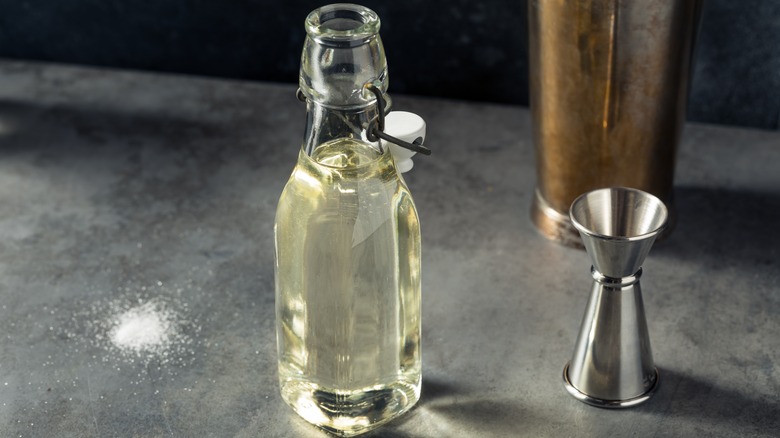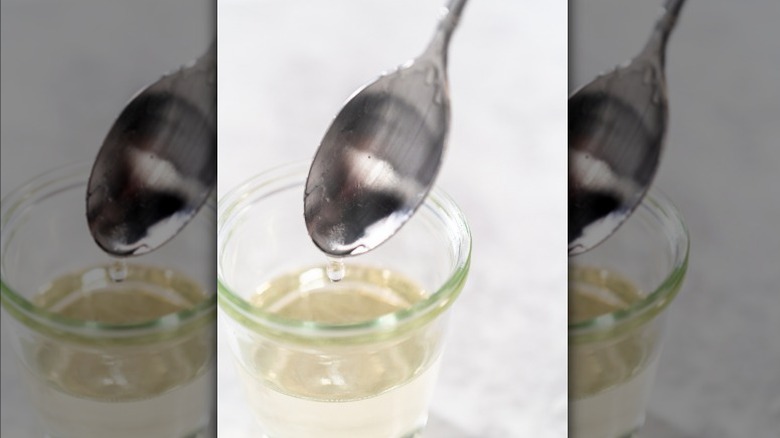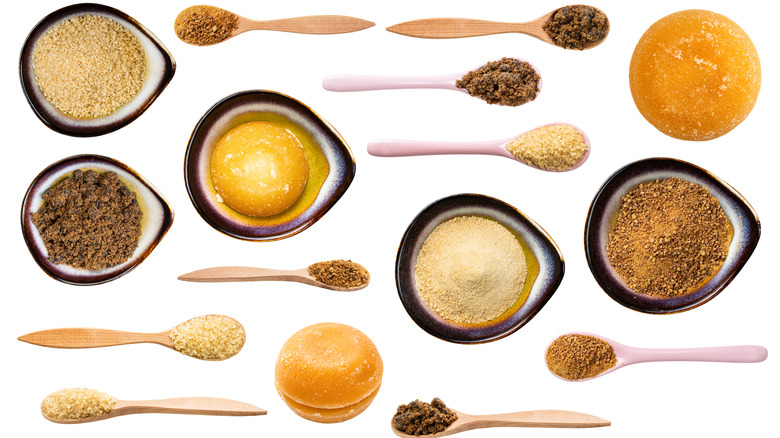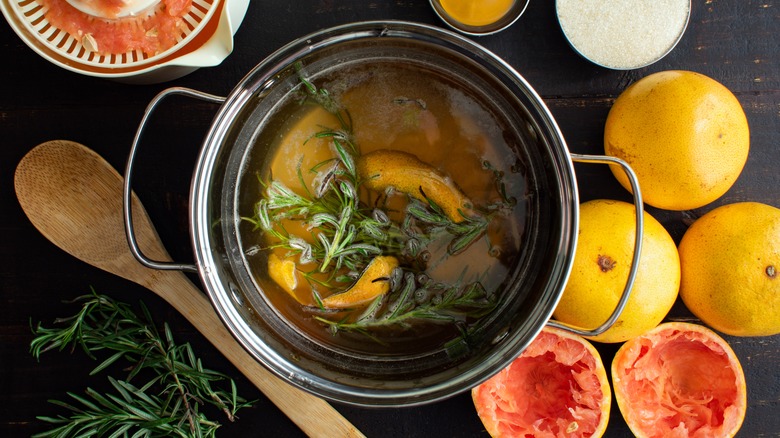Everything You Need To Know About Simple Syrup
Simple syrup is a basic mixture of sugar and water. It is commonly used in cocktails but can also be found in non-alcoholic beverages and even desserts. Margaritas, French 75s, whisky sours, lemonade, iced coffees, and mocktails are all made more easily when using simple syrup. Simple syrup is also used in desserts to sweeten whipped cream, moisten cake layers, and make a glaze.
While you can buy pre-made simple syrup, it is remarkably easy and affordable to make at home. In its most fundamental form, simple syrup combines equal parts sugar and water to create a versatile and neutral syrup. A rich simple syrup, on the other hand, uses two parts sugar to one part water. Rich simple syrup is used when you want to sweeten something without adding too much volume, or when a thicker mouthfeel is desired. While you can use measuring cups, the result will be less precise and can affect the sweetness of the simple syrup. It is best to use a kitchen scale because different-sized sugar granules trap varying amounts of air, throwing off volume measurements.
Cold method versus hot method
Most often, simple syrup is made using the hot method, where the sugar and water are heated on the stovetop until the former dissolves. Just let it cool, and it's ready to go. The cold method allows the sugar to dissolve in water at room temperature, with some agitation to help the process along. Superfine sugar works best for this, and the dissolving process takes about 15 minutes. The result is a slightly more viscous solution because the sucrose does not break down into fructose and glucose molecules, as it does when warmed. Some people prefer the cold method because of the texture, the convenience of not having to wait for the syrup to cool, and the specificity of the yield. 1 cup of water and 1 cup of sugar will yield 1½ cups of simple syrup, but when using the hot method, some of that volume is lost to evaporation.
Aside from the sugar dissolving more easily, another major benefit of the hot method is its extended shelf life. Heating the mixture to a boil kills microbes, and pouring the hot liquid into the storage container also kills some of the microbes existing on that surface. In the fridge, standard simple syrup will last about one month and rich simple syrup will last up to about six months, but that can be way less if any contaminants are inadvertently introduced to the syrup.
Can you use different types of sugar?
Standard simple syrups use granulated white cane sugar, which will yield the most neutral taste, but variations with other kinds of sugar can be interesting and complex. It is crucial to use a kitchen scale when experimenting because all sugars will have different moisture levels and granule sizes.
Turbinado and demerara sugars are similar in taste and are less refined than white sugar, so they retain more molasses notes. Both these raw sugars can impart a caramel complexity. For a more pronounced molasses flavor, try brown sugar or muscovado sugar. Brown sugar is white sugar with molasses added back in, but unrefined muscovado sugar has not had the molasses processed out and can have notes of dried fruit and smoke. Both brown sugar and muscovado range from light to dark, allowing you to choose based on the intensity of flavor you want in your simple syrup. Piloncillo, coconut sugar, palm sugar, or liquid sweeteners like agave, honey, molasses, and maple syrup would also be interesting alternatives to white sugar.
How to make simple syrup infusions
Infusions are another way to add intrigue to your simple syrup, and this is where you can really let your creativity guide you. Whole spices like cinnamon sticks, cardamom pods, cloves, star anise, and black peppercorns work well. Try whole vanilla or coffee beans for other warm flavors. Fresh ingredients are great too, so feel free to use citrus zest, ginger root, and herbs like rosemary, basil, mint, and thyme.
Using the hot method works well for heartier ingredients, and helps the syrup last longer. It's best to steep infusion ingredients in the warm liquid to preserve the flavor rather than boiling. For a brighter taste, use the cold method and steep delicate ingredients for no more than 10 hours and sturdier ingredients for a couple of days. Either way, taste as it rests, and strain once the desired flavor has been achieved. Syrups that use fresh ingredients will last a couple of weeks in the fridge.
Another way to create interesting simple syrups is to sub out water for virtually any other liquid. Brewed tea, coffee, fruit juice, and vegetable juice would all work well here. Layer complementary flavors for a now not-so-simple syrup that really shines.




